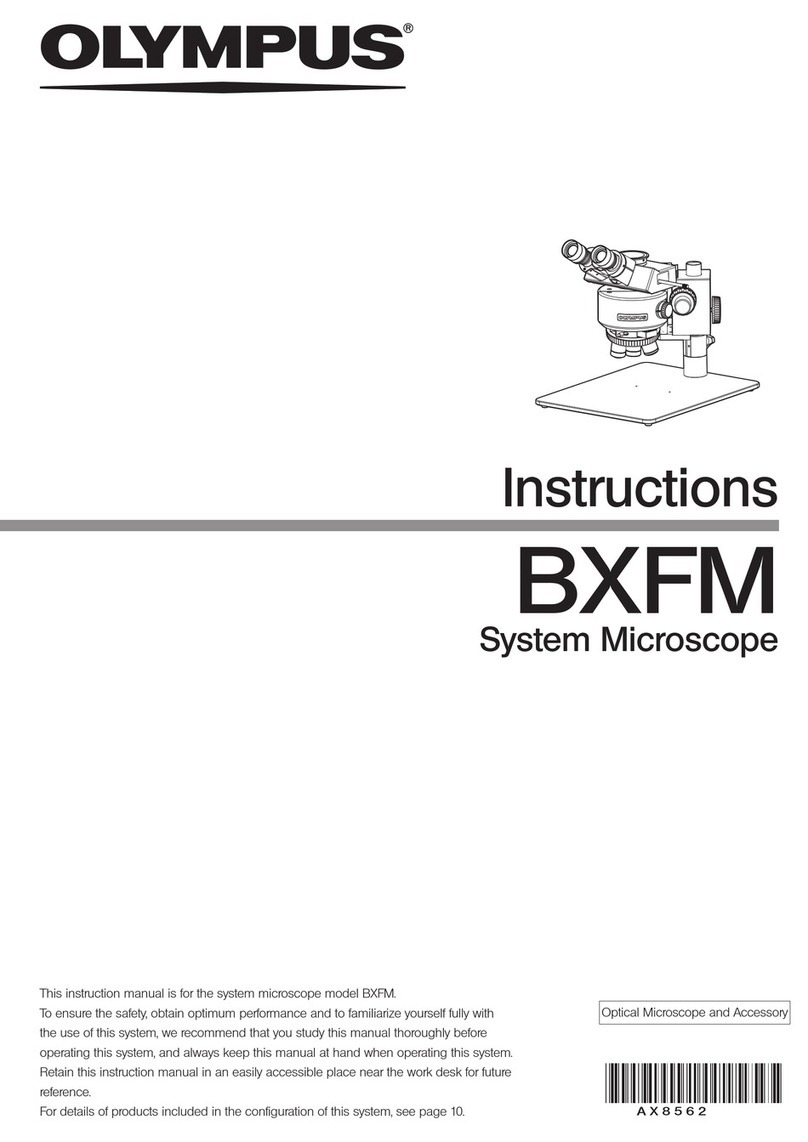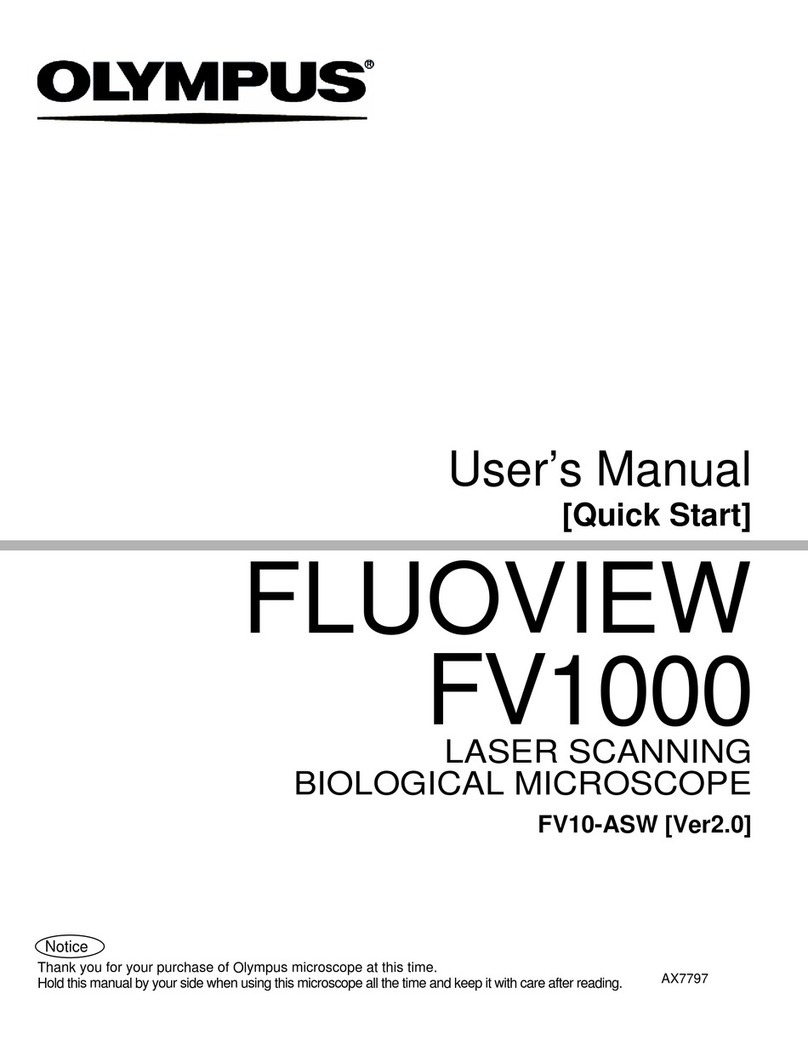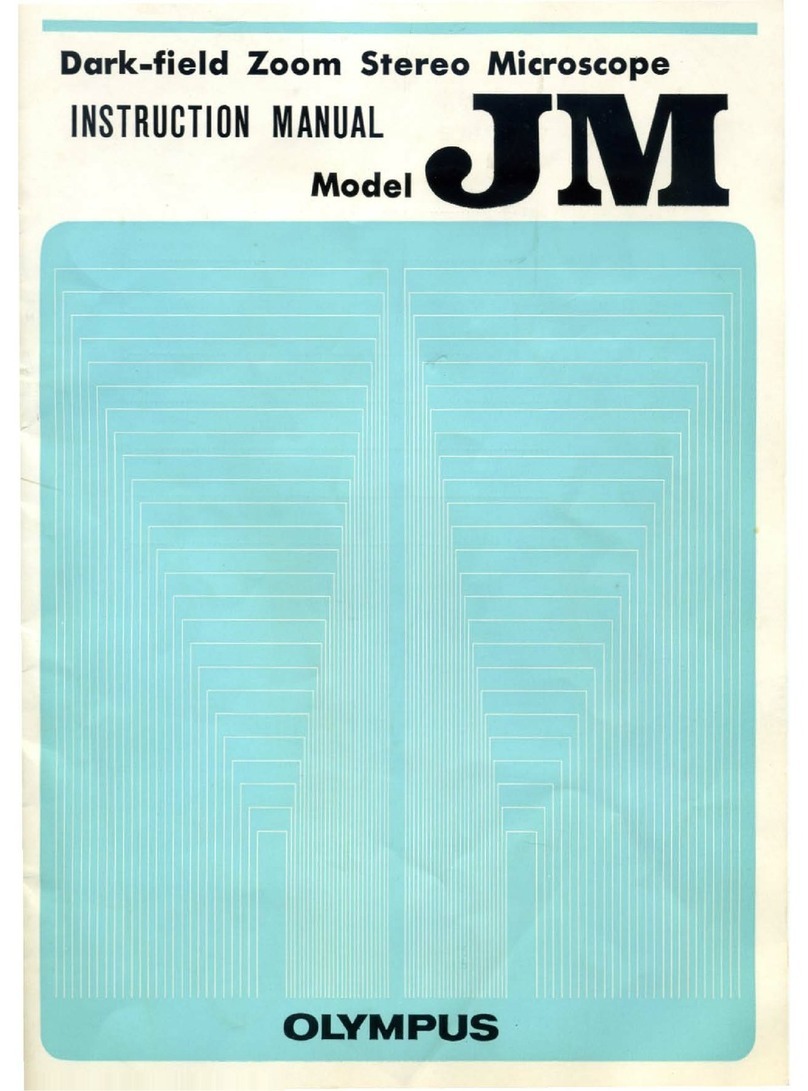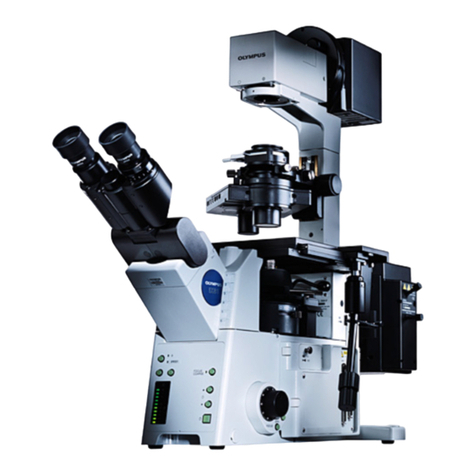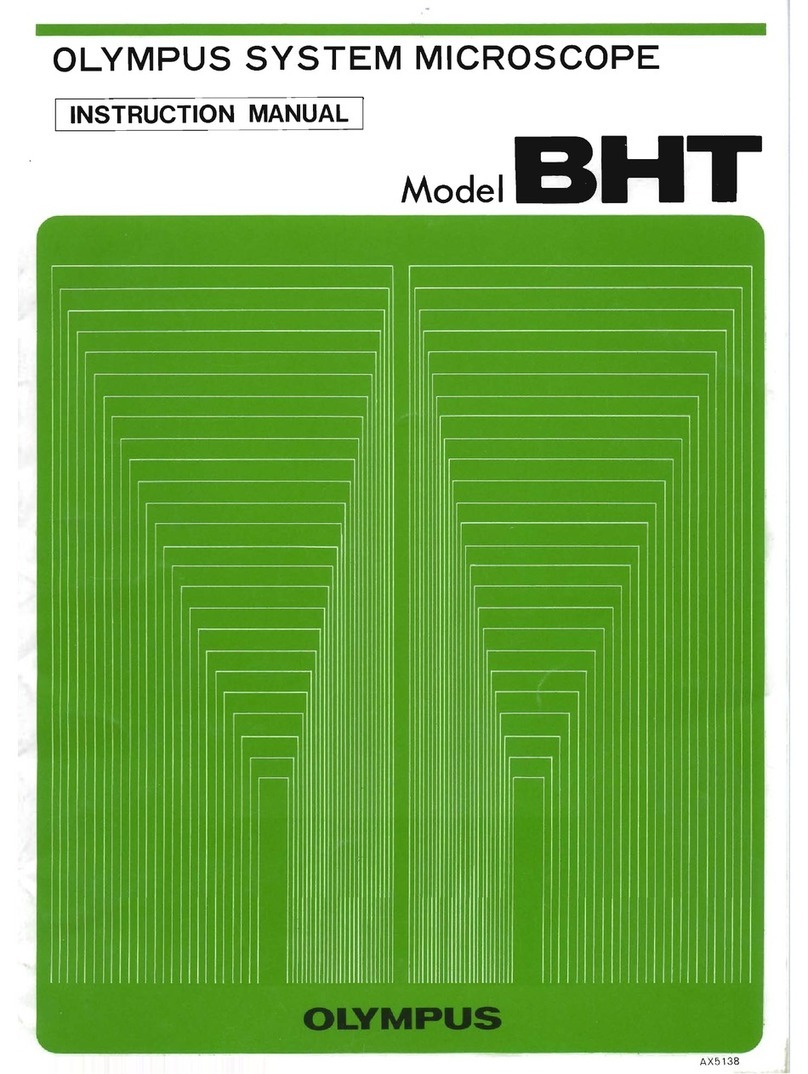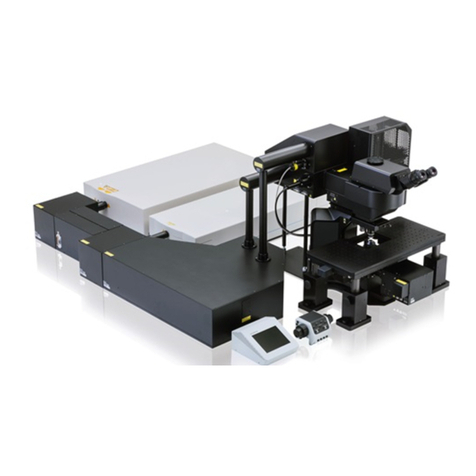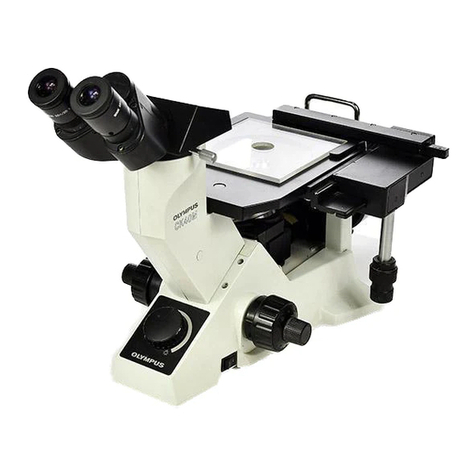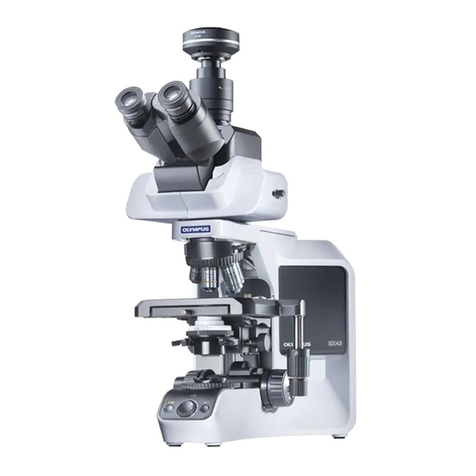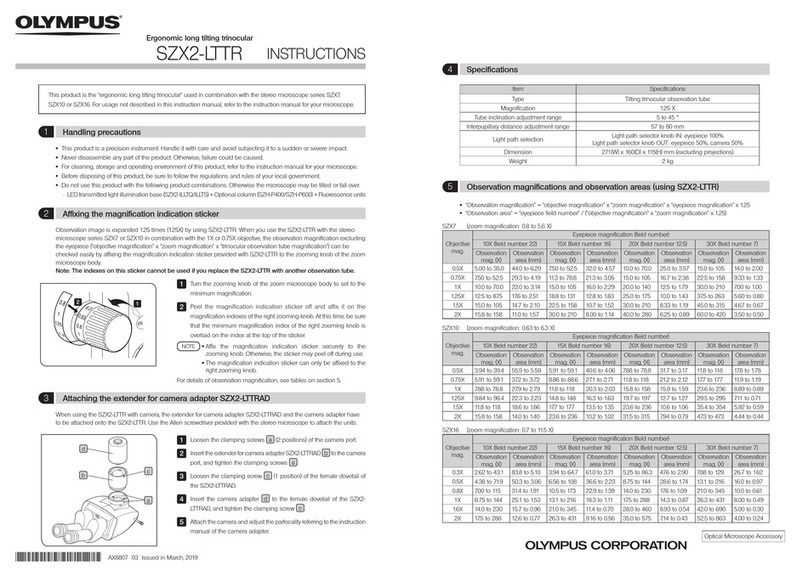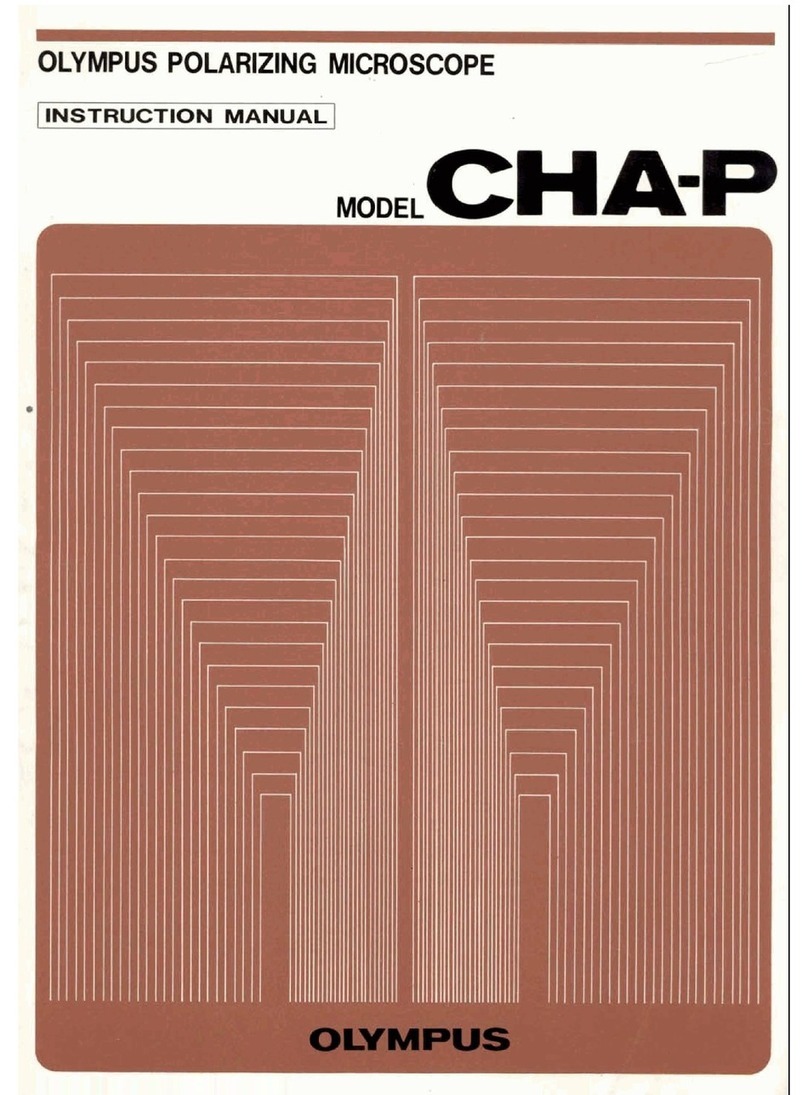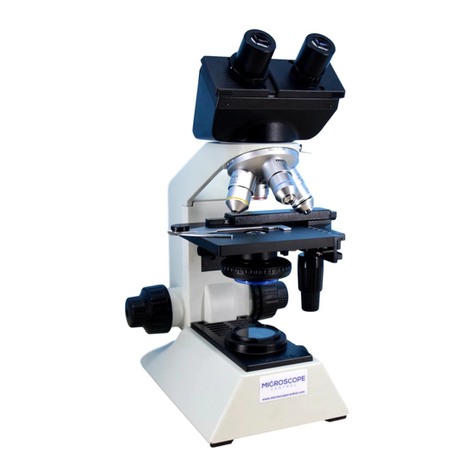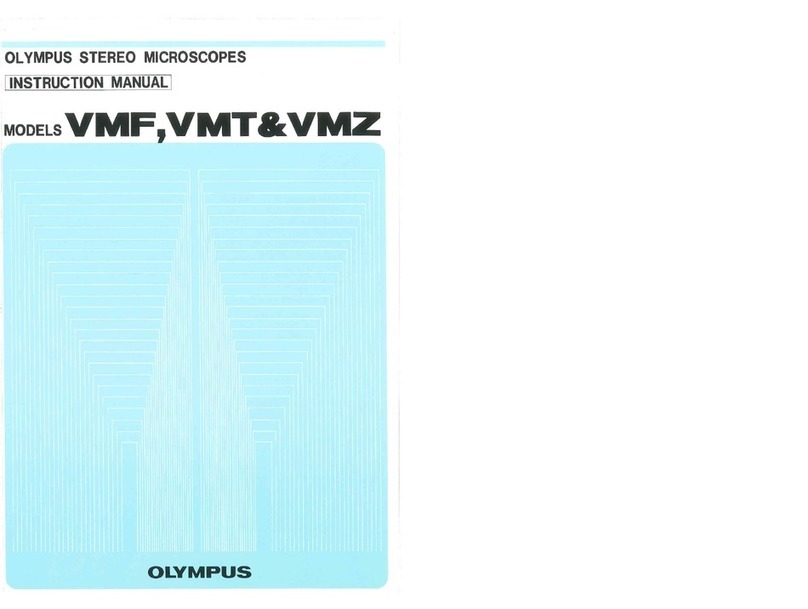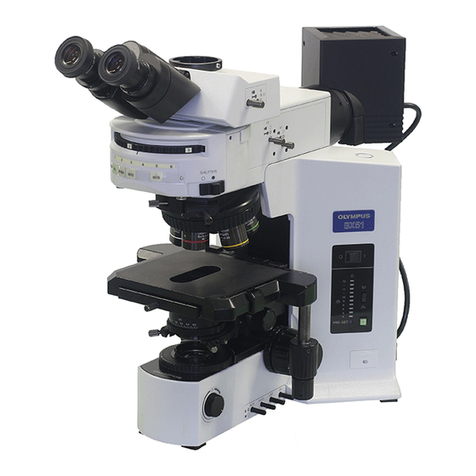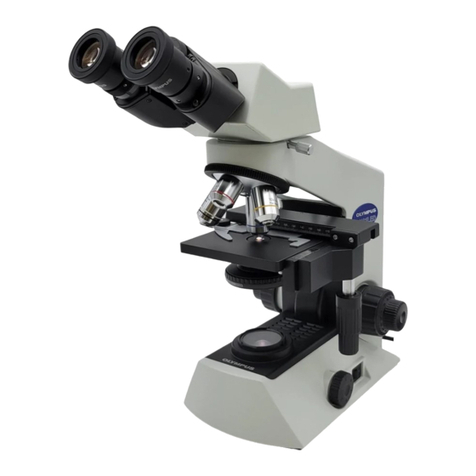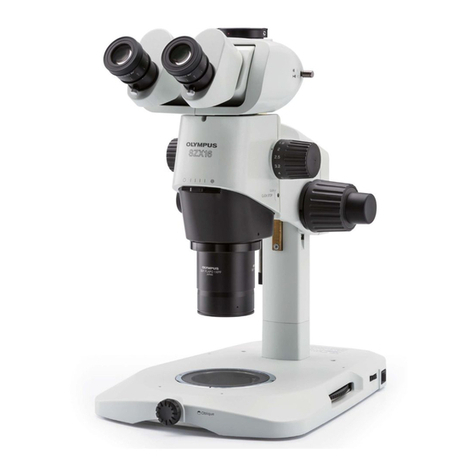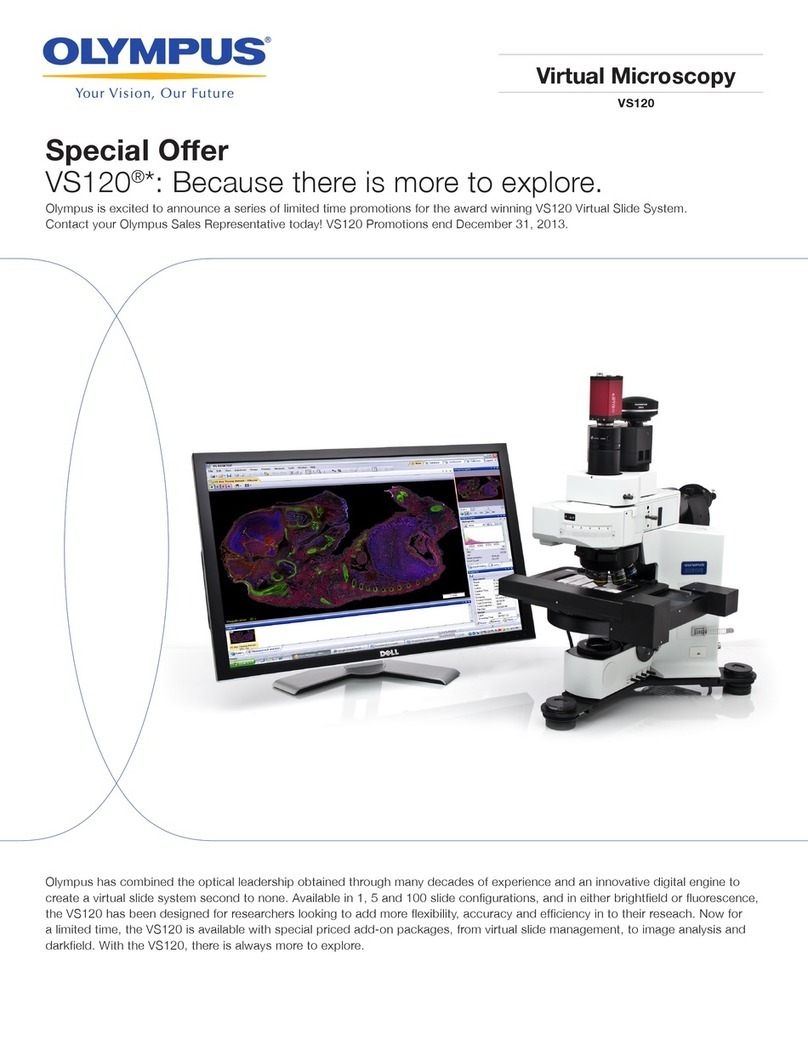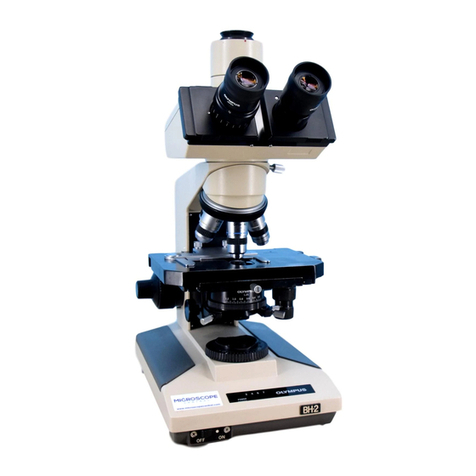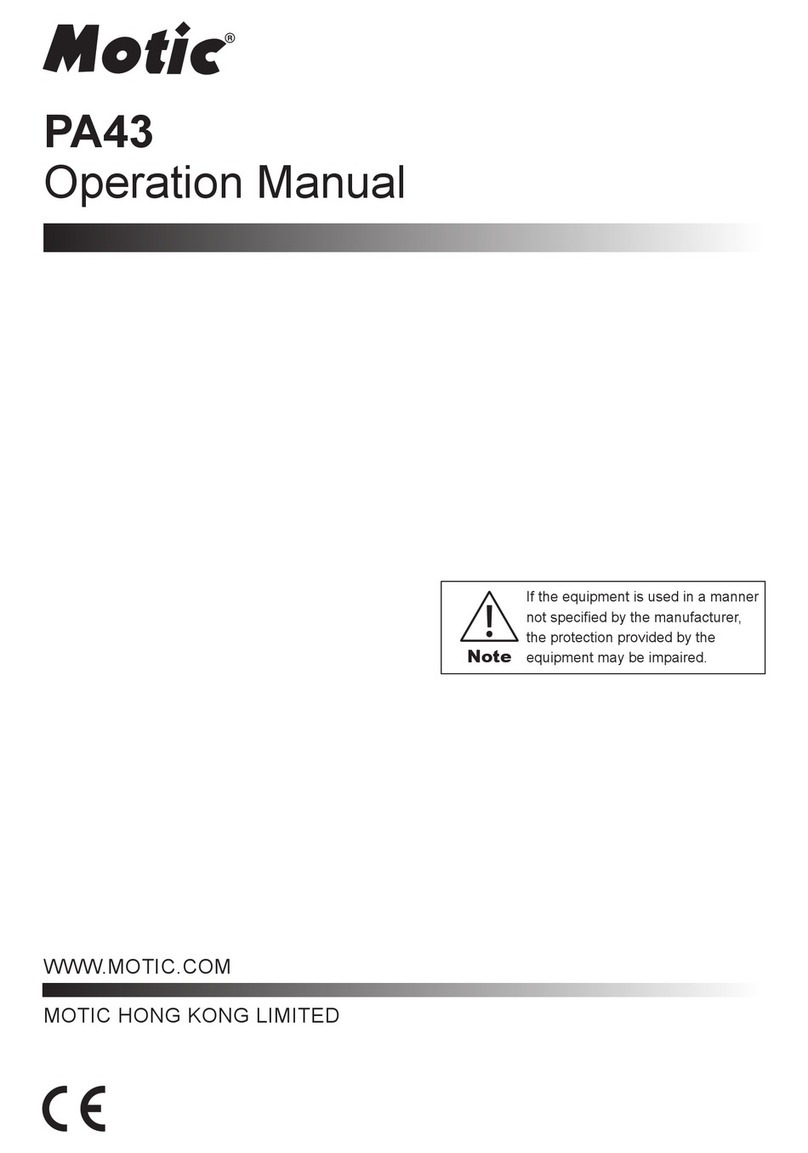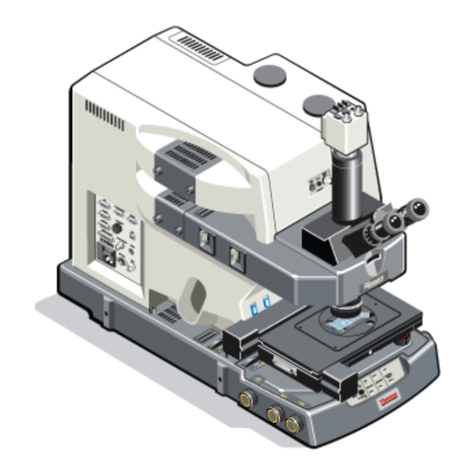DP80
Camera head
To B4-mount
camera adapter
Camera interface cable
External trigger cable
Desktop
PC
PCIe I/F board
cellSens Entry or
cellSens Standard or
cellSens Dimension
* Image acquisition time and speed may be reduced if exposure time increases or several tasks are active in the background.
** "Centering" is a camera function which aligns the positions of the color and monochrome CCD sensors.
* Please use computers that conform to the regulations for your region.
DP80 Camera Head Dimension (Unit: mm)
Weight: approx 2.5 kg
Shinjuku Monolith, 3-1, Nishi Shinjuku 2-chome, Shinjuku-ku, Tokyo, Japan
Wendenstrasse 14-18, 20097 Hamburg, Germany
3500 Corporate Parkway, Center Valley, Pennsylvania 18034-0610, U.S.A.
491B River Vallay Road, #12-01/04 Valley Point Office Tower, Singapore 24837
21 Gilby Road, Mt. Waverley, VIC 3149, Melbourne, Australia
5301 Blue Lagoon Drive, Suite 290 Miami, FL 33126, U.S.A.
A8F, Ping An International Financial Center, No. 1-3, Xinyuan South Road,
Chaoyang District, Beijing, China, 100027
• OLYMPUS CORPORATION is ISO14001 certified.
• OLYMPUS CORPORATION is FM553994/ISO9001 certified.
• All company and product names are registered trademarks and/or trademarks
of their respective owners.
• Images on the PC monitors are simulated.
• Specifications and appearances are subject to change without any notice or
obligation on the part of the manufacturer.
Printed in Japan M1764E-112012
DP80 specifications DP80 system requirement
SpecificationsItem
Color / Monochrome 2CCD camera
Pixel shifting (only for color CCD)
Cooling system: Peltier device (max. Ta -10 degreeC)
[Color]
2/3 inch1.45 mega pixels color CCD, RGB colors on chip filter (Bayer)
[Monochrome]
2/3 inch1.45 mega pixels monochrome CCD
Progressive scan
B4 mount (2/3 inch Bayonet mount)
Auto,SFL-Auto,Manual
±2.0 EV step: 1/3 EV
23 µs to 60 s
Full image, 30%, 1%, 0.1%
2x2,4x4
1360 x 1024 (1x1): 15 fps, 680 x 512 (1x1) : 15 fps
680 x 510 (2x2): 29 fps, 340 x 250 (4x4) : 57 fps
[Centering OFF]
4080 x 3072 (Pixel shift)
2040 x 1536 (Pixel shift)
1360 x 1024 (1x1), 680 x 512 (1x1)
680 x 510 (2x2), 340 x 250 (4x4)
ISO200/400/800/1600 equivalent
14 bit *Number of effective bit: 12 bits@16 bit mode image
4080 x 3072: approx. 3.3 s, 1360 x 1024: approx. 0.3 s
sRGB,AdobeRGB (only for color CCD)
[Centering OFF]
1360 x 1024 (1x1), 680 x 512 (1x1)
680 x 510 (2x2), 340 x 250 (4x4)
x0.5/x1/x2/x4/x8/x16
14 bit *Number of effective bit: 14 bits@16 bit mode image
17000e- (Gain 0.5x)
7e-
2300:1 (Gain 0.5x)
55% (500 nm)
0.4e-/pixel/s (Ta=25degere C)
1360 x 1024: approx. 7.7fps, 680 x 510 (2 x 2): approx. 14.3fps,
340 x 250 (4 x 4): approx. 20fps
File formats supported by cellSens software
133 mm(W) x 130 mm(D) x 139 mm(H) /approx. 2.5 kg
Approx. 2.8 m/approx. 0.23 kg
Approx. 0.2 m/approx. 40 g
Intel Core i5/ Intel Core i7 / Intel Xeon
4 GB or more
(8 GB recommended for high speed image acquisition)
Free space of 1 GB or larger
(at the time of installation)
1280x1024 (min. 1024 x768) monitor resolution with
32-bit-video card with separate graphics memory
(no integrated graphics processor with shared memory)
PCI-Express x1 Rev. 1.0a or later
Compatible with half size or LowProfile
PCIe board (106.7 mm x 174.6 mm)
Windows 7 Professional/Ultimate with SP1 (64 bit)
250 W or more
Unoccupied FDD power cable, HDD
power cable (4-pin size), or Serial ATA
power cable must be available
PC/AT compatible
Camera type
Size
Image sensor
Camera mount
Exposure
control
Metering modes
Binning
Color
Image Resolution
ISO Sensitivity
A/D
Image acquisition time *
Color space
Image Resolution
Gain
A/D
Full well capacity
Readout noise
Dynamic range
Quantum efficiency
Dark current
Image acquisition speed *
Image file format
Dimensions,
weight
Camera head
Interface cable
External trigger cable
Scanning mode
Mode
Adjustment
Exposure time
Monochrome
[Centering ON]**
3648 x 2736 (Pixel shift)
1824 x 1368 (Pixel shift)
1216 x 912 (1x1), 608 x 456 (1x1)
608 x 456 (2x2), 304 x 228 (4x4)
[Centering ON]
1216 x 912 (1x1), 608 x 456 (1x1)
608 x 456 (2x2), 304 x 228 (4x4)
CPU
RAM
HDD
Graphics
Extension slot
OS
Power supply
Live frame rate
Monitor
Olympus-Tower, 114-9 Samseong-Dong, Gangnam-Gu, Seoul, Korea
Low-profile bracket
SATA-to-HDD
power conversion
adapter
HDD-to-FDD
power conversion
cable

